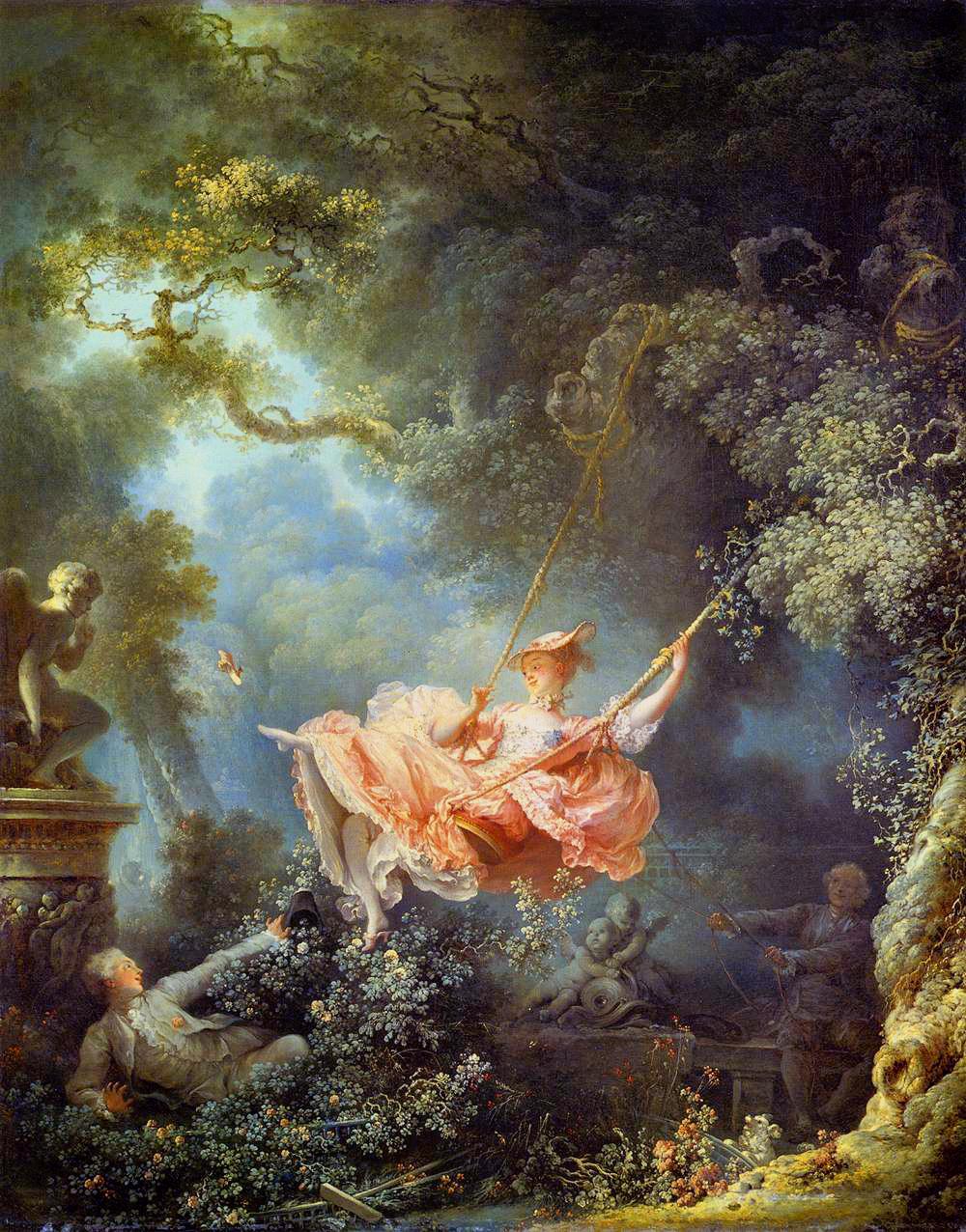9.6: Rococo (1730 – 1760)
- Page ID
- 31889
The Rococo period followed the late Baroque period in Europe, a movement with an agile approach and playful themes, the brilliant and light pastel colors a stark contrast to the darker Baroque paintings. The Rococo period is customarily associated with King Louis XV's reign and the building of Versailles. Rococo art was born in Paris, a shift in the center of art from Italy to France, where luxurious castles were constructed with lavish frescos, paintings, and sculptures. A world of its own, the Rococo period brought heightened images of ornate and highly decorated art, furniture, clothing, in purely nonfunctional ways.
Rococo is a term from two words, rocaille (stone) and coquilles (shell).
Two artists, François Boucher (1703-1770) and Jean-Honoré Fragonard (1732-1806) are known in Europe for their voluptuous Rococo paintings of allegorical scenes. Flowery panoramas, with elaborate dresses on women, The Secret Message (9.25) was painted against a make-believe background of twisting vines around trees, floral and green grass with ancient Greek sculptures that appeared with overgrown vegetation tangled around its edges. Satin clothing and frivolous play are the heart of the Rococo period, and the apex of decorative art as the woman in The Swing (9.26) loses her shoe to the hidden man. Her swirling pink silk dress forms a focal point, the light blue of the sky shining down on her.



Painting the royal figures was a common practice for Rococo female painters. Élisabeth Louise Vigée-Le Brun (1755–1842) depicted the queen in Marie-Antoinette with the Rose (9.27) excessively dressed in elegant silk clothing, powdered wig, and feathered hat. The queen treasured roses and frequently posed with a rose from her many bushes.


